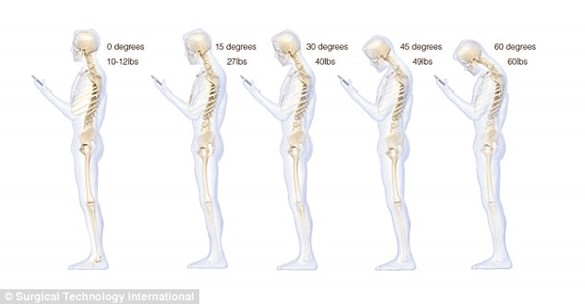Leaning over while working over a computer or Phone can negatively impact your back. Leaning over devices causes compressed inter-vertebral discs, strained muscles, and altered spinal alignment. This posture can lead to chronic back pain, tension headaches, and long-term musculoskeletal issues. To prevent back and neck pain, maintain good posture, take regular breaks, and ensure your workspace is ergonomically designed.

Low vision children are particularly vulnerable to neck and back problems, but anyone who leans over their work will eventually pay a high cost. Research shows that slumping over a phone adds significant pressure on the cervical spine. Bending the head to a 60-degree angle can add 60 pounds of pressure, equivalent to more than four stone. Proper posture can also lead to great touch typing skills.
Prevent Back and Neck Pain
Leaning over while working can have several negative effects on your back. Here are some key points:
-
Compression of Inter-vertebral Discs: Slouching or leaning forward compresses the inter-vertebral discs, which act as shock absorbers between the vertebrae. Over time, this can lead to disc degeneration, herniation, and nerve compression, resulting in back pain and conditions like sciatica1.
-
Muscle Strain: Prolonged leaning can strain the muscles in your back, neck, and shoulders. This strain can cause pain, stiffness, and reduced blood supply to these muscles, leading to chronic discomfort2.
-
Postural Changes: Habitual poor posture can alter the natural curvature of your spine. This can lead to long-term changes in your spinal alignment, increasing the risk of chronic back pain and other musculoskeletal issues3.
-
Tension Headaches: Tightness in the neck muscles from leaning over can lead to tension headaches that radiate from the neck up to the head4.
To mitigate these effects, it’s important to maintain good posture, take regular breaks to move around, and ensure your workspace is ergonomically designed to support your spine health.
